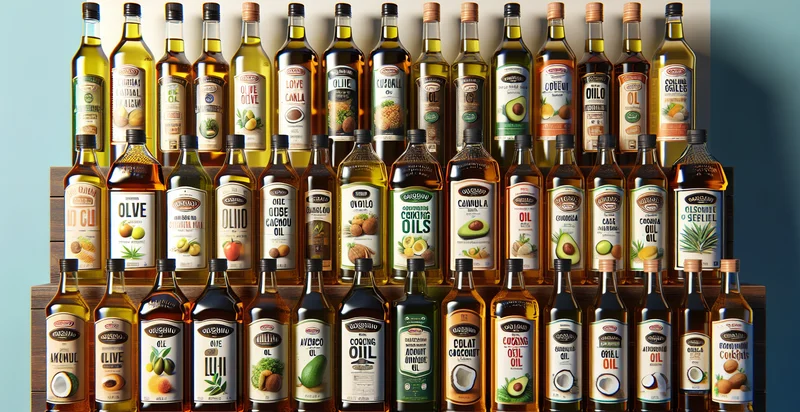Identify is a cooking oil or fat
using AI
Below is a free classifier to identify is a cooking oil or fat. Just upload your image, and our AI will predict if it's a cooking oil or fat - in just seconds.

Contact us for API access
Or, use Nyckel to build highly-accurate custom classifiers in just minutes. No PhD required.
Get started
import nyckel
credentials = nyckel.Credentials("YOUR_CLIENT_ID", "YOUR_CLIENT_SECRET")
nyckel.invoke("is-a-cooking-oil-or-fat", "your_image_url", credentials)
fetch('https://www.nyckel.com/v1/functions/is-a-cooking-oil-or-fat/invoke', {
method: 'POST',
headers: {
'Authorization': 'Bearer ' + 'YOUR_BEARER_TOKEN',
'Content-Type': 'application/json',
},
body: JSON.stringify(
{"data": "your_image_url"}
)
})
.then(response => response.json())
.then(data => console.log(data));
curl -X POST \
-H "Content-Type: application/json" \
-H "Authorization: Bearer YOUR_BEARER_TOKEN" \
-d '{"data": "your_image_url"}' \
https://www.nyckel.com/v1/functions/is-a-cooking-oil-or-fat/invoke
How this classifier works
To start, upload your image. Our AI tool will then predict if it's a cooking oil or fat.
This pretrained image model uses a Nyckel-created dataset and has 2 labels, including Cooking Fat and Cooking Oil.
We'll also show a confidence score (the higher the number, the more confident the AI model is around if it's a cooking oil or fat).
Whether you're just curious or building is a cooking oil or fat detection into your application, we hope our classifier proves helpful.
Related Classifiers
Need to identify is a cooking oil or fat at scale?
Get API or Zapier access to this classifier for free. It's perfect for:
- Quality Control in Food Manufacturing: Manufacturers can utilize the 'is a cooking oil or fat' identifier to ensure that only approved oils and fats are used in their production lines. By implementing this function, they can minimize the risk of contamination and verify ingredient authenticity before they enter the processing phase.
- Nutritional Analysis Apps: Health and nutrition tracking applications can leverage this identifier to analyze users' cooking choices. By monitoring the types of cooking oils or fats being used, these apps can provide tailored dietary recommendations and help users achieve their nutritional goals.
- Food Safety Compliance: Regulatory agencies can deploy this function during inspections to quickly identify the types of cooking oils and fats present in food products. This will aid in ensuring compliance with safety standards and labeling regulations, enhancing consumer protection.
- E-commerce Food Product Verification: Online grocery platforms can use the identifier to verify that products being sold correspond correctly to their descriptions regarding the type of cooking oil or fat. This adds an extra layer of trust for consumers, ensuring they get what they paid for.
- Recipe Recommendation Engines: Cooking and recipe websites or applications can integrate this classification function to recommend alternative oils or fats based on the user's dietary preferences. Users with specific restrictions, such as vegan or allergenic diets, will benefit from personalized suggestions tailored to their requirements.
- Supply Chain Tracking: Companies in the food supply chain can utilize the identifier during various stages, such as in receiving and storing ingredients, to ensure that only the intended fats and oils are present. This capability improves inventory management and enables accurate tracking of cooking oils sourced from multiple suppliers.
- Consumer Education Campaigns: Health organizations can leverage the identifier in educational tools aimed at consumers, helping them understand the difference between various types of cooking oils and fats. This knowledge empowers consumers to make healthier choices in their cooking, ultimately promoting better public health.


